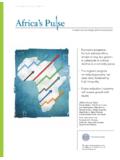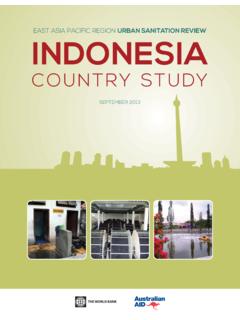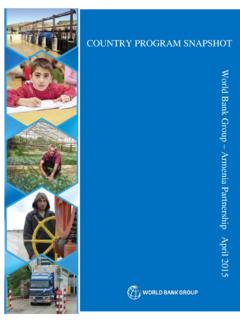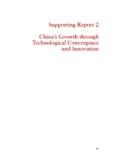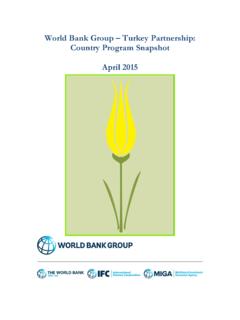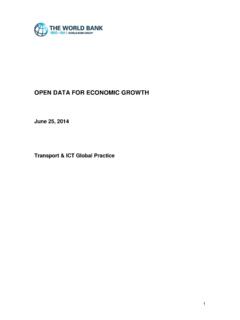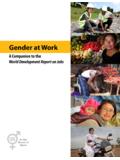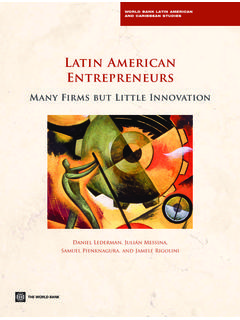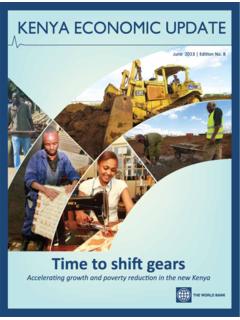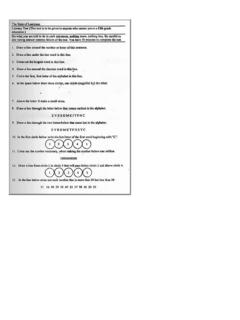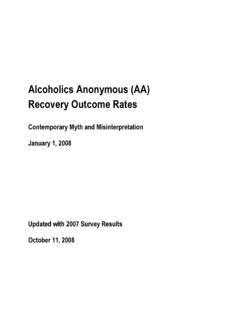Transcription of Gender at Work - World Bank
1 Gender at work A Companion to the World Development Report on Jobs In the World of work Cover photos from top to bottom: Construction worker checking progress and quality of dam under construction, Sri Lanka. Photographer Lakshman Nadaraja Woman attends her produce post in a market, Guatemala City, Guatemala. Photographer Maria Fleischmann Young woman tending her peppers in the marketplace, Lagos, Nigeria. Photographer Women's World Banking Stall owner, Thimphu weekend market, Bhutan. Photographer Michael Foley Teacher in action, Rajasthan, India.
2 Photographer Michael Foley Page 1: Women repairing a road, Hanoi. Photographer Tran Thi Hoa Page 5: Woman works at weaving a carpet, Herat, Afghanistan. Photographer Graham Crouch Page 17: Woman tends to plants in a nursery, Sri Lanka. Photographer Lakshman Nadaraja Page 33: Woman works on her farm, Tanzania. Photographer Scott Wallace Page 53: Woman cutting bamboo to weave into baskets, Vientiane, Lao PDR. Photographer Stanislas Fradelizi This work is a product of the staff of The World bank Group with external contributions.
3 The findings, interpretations, and conclusions expressed in this work do not necessarily reflect the views of The World bank , its Board of Executive Directors, or the governments they represent. The World bank does not guarantee the accuracy of the data included in this work . The boundaries, colors, denominations, and other information shown on any map in this work do not imply any judgment on the part of The World bank concerning the legal status of any territory or the endorsement or acceptance of such boundaries.
4 Nothing herein shall constitute or be considered to be a limitation upon or waiver of the privileges and immunities of The World bank , all of which are specifically reserved. Gender at work A Companion to the World Development Report on Jobs In the World of work Table of Contents Acknowledgments vii Foreword ix Executive Summary 1. Gender Equality in the World of work Matters 1. Where Do We Stand? 1. Overlapping Disadvantages and Gender Equality at work 2. Igniting Gender Equality in the World of work 3.
5 Notes 4. 1. Introduction: Engendering Jobs 5. Context: Gender and the Jobs Challenge 5. Motivation: Inadequate Progress and Missed Dividends for Development 6. Report Scope, Approach, and Value Added 8. Two Paradoxes Surrounding Equality at work 10. A Note on Male Disadvantage 11. Context Matters 12. Notes 13. 2. Taking Stock: Stylized Facts About Gender at work 17. Employment Status and Quality 18. Earnings 22. Differences in Entrepreneurship and Farming 24. Labor Force Participation 25. Notes 28. 3.
6 Overlapping Constraints Across the Lifecycle 33. Bundled Constraints: Norms, Agency, and Economic Opportunities 34. Childhood and Youth: The Start of Unequal Trajectories 38. Productive Age: Constraints at work 40. Elderly Years: The Culmination of Lifelong Disadvantage 45. Notes 46. 4. Igniting Gender Equality in the World of work 53. Diagnostics 54. Three Levels of Action 55. Conclusions 72. Notes 72. iv Gender at work Boxes Box How Gender equality in the World of work contributes to development 7.
7 Box Regional perspectives on challenges and opportunities for Gender equality at work 12. Box To better understand Gender at work 19. Box Gender and informality: nuanced perspectives are needed 21. Box Norms favor men's economic opportunities, but can policies change them? 36. Box Fragility, Gender , and jobs 39. Box Beyond having a job: Gender and the Decent work Agenda 55. Box Navigating the many policy options for childcare services and financing 61. Box Companies can help level the playing field for women's work through corporate philanthropy 66.
8 Box Starting from within: The World bank Group and Gender equality at work 68. Resource Box Where do countries stand? Global and regional rankings on Gender equality and women's economic empowerment 28. Resource Box Data sources on deprivations and constraints 47. Resource Box Using ADePT Gender to support country diagnostics 57. Resource Box Identifying what works 65. Resource Box Resources for private sector engagement and leadership 69. Figures Figure Female labor force participation has increased dramatically in Latin America and the Caribbean 8.
9 Figure Gender outcomes result from interactions among markets, institutions, and households 9. Figure Countries range widely in the extent of Gender gaps in economic opportunities despite levels of development 10. Figure In the Middle East and North Africa, not much improvement in female labor force participation despite gains in schooling 11. Figure A multidimensional perspective to Gender equality in the World of work is needed 18. Figure Women are underrepresented in every type of employment, with greater gaps in developing countries 19.
10 Figure Women are generally less likely to be full-time employed for an employer 20. Figure Women's employment is more likely to be part-time 20. Figure Employment status by sex and income level 22. Figure Women are underrepresented in firms' top management 23. Figure Country differences exceed Gender differences in attitudes toward women's leadership ability 23. Figure Distribution of self-employed jobs in 97 developing countries 24. Figure Women are less likely than men to have formal accounts and credit 26.

